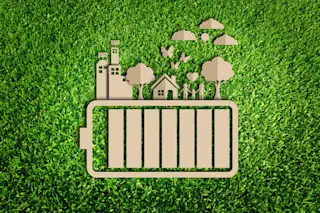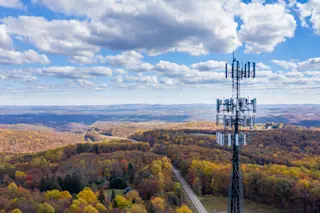City skyline or untapped resource? (Credit: Matej Kastelic/Shutterstock)How many windows are there in New York City? However you answer this classic interview day curveball, imagine if we devised a way to use each of those windows to convert the sun’s rays into electricity. Whoa. William Rankine, a noted 19th century Scottish mechanical engineer, would call that an idea with a lot of potential.
While we (most likely) will never turn every window in NYC into a solar cell, it won’t be because we never tried. Case in point: Researchers from China designed a specialized film that, when applied to the inside of a window, generates electricity from the sun while also reflecting infrared rays to keep the inside of a building cool. It’s an important step if city skylines are to someday double as solar power plants. Early attempts to embed photovoltaic films in windows produced a reddish tint that ...














